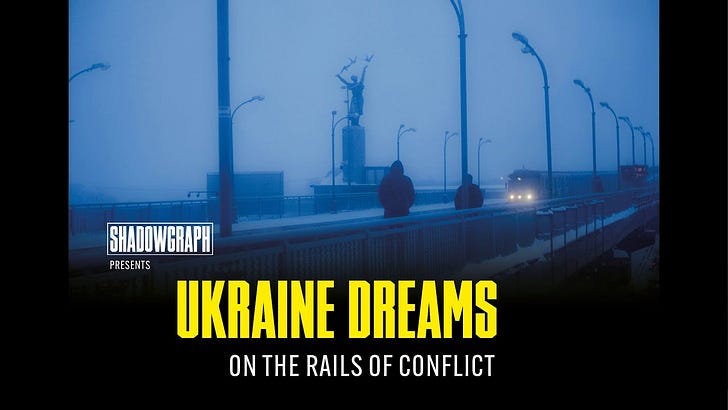Text by Ross Domoney.
It was 2 a.m. As I was wrapped up in the so-called safety of my sleeping bag, I had a revelation.
I was in Kyiv’s central train station. The lights were off, and there was an immense feeling of solidarity as families huddled together. This space was both cozy and utterly terrifying. Streaks of light from soldiers’ torches scanned for Russian saboteurs.
It was March 2022, just one month after the full-scale Russian invasion of Ukraine. There was an army curfew. We were not allowed to leave the station until 7 am. Kyiv was under a semi-siege at the time, as the Russians attacked the city’s outer suburbs.
My friend Antonis Vradis and I were waiting to leave the station to film in the capital’s underbelly: its complex Soviet metro system.
Our mission was to ask train commuters:
What do you dream about in your sleep?
Through this delicate language of dreams, everyday citizens open up and reveal their deeply personal feelings about the state of the world and how they see themselves in it.
This language, which is part of reality, takes us into an otherworldly experience of politics and conflict.
While in my sleeping bag, my revelation led me to discover that this risky journey of dream-catching was part of something much bigger. It was part of a new media landscape, which would soon become known as Shadowgraph.
I built this media platform around the concept for this video series, ‘Dream Trains’. Its surreal, otherworldly quality opens up a fascinating new language within journalism. This pilot episode from Ukraine is the first in a three-part series. We are currently editing the second episode, The American Dream, which explores the subconscious civil war of the U.S. during its populist meltdown.
Returning to Kyiv Central Station, 7 a.m. finally arrived. After a hard night’s sleep, I packed up my sleeping bag, and we stepped outside.
We searched for the deep underground passages of the metro system. Kyiv, a ghost city full of dreams, lay before us. We kept our heads down and worked with the subconscious, asking train commuters about their dreams.
After a few air raid sirens and a deafening Ukrainian counter-missile strike, we were arrested in the subway. Accused by a branch of Kyiv’s police of being spies, we were taken even deeper into the metro — into a bunker.
They soon realised that we were pretty useless spies. In fact, they thought we were plain weird in our quest to capture dreams. Their hardened anger melted into pity as they spoiled us with cigarettes and jars of their mother’s pickles.
We left Kyiv by night train. The train’s lights were turned off so it could creep quietly through the darkness, undetected. I had never felt cosier, tucked into a sleeper train, exhausted with memory cards full of footage. Fragments of images, lights, and thoughts passed through my mind as I gazed out the window.
And I thought about shadows.
Two years later, I launched Shadowgraph, dreaming of creating worlds inspired by reality but not entirely part of it.



